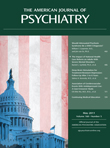Autism is a presence in both general and scientific socie-ties now more than ever before. Several factors are responsible for this. The tremendous and rapid rise in prevalence is one factor. Researchers are trying to determine whether—beyond changing and heterogeneous diagnostic methods, broadening of the concept, and improvement in screening and diagnostic abilities—there is any real increase. If that be the case, the explanations would probably lie in a convergence of timely, fascinating, and complex environmental factors. The alternative possibility of genetic changes being responsible for such a fast increase is more difficult to believe. Advocacy by families and professionals, scientific research, and interest on the part of funding agencies are synergistically pushing the problems of individuals with autism spectrum disorders to the forefront. This textbook, by Hollander, Kolevzon, and Coyle, has therefore arrived at just the right moment. It is timely and opportune in giving an extensive account of our present knowledge of these disorders.
Many controversies are now in the limelight. Given the paucity of evidence-based information for understanding autism spectrum disorders, expert knowledge and experience are of particular value in the field of autism. The textbook has very good contributors who give important accounts of the current state of knowledge, which are scientifically based but also put in context with the perspective of history and social imperatives.
Some excellent contributors take a step forward in integrating knowledge about these disorders. Michael Rutter summarizes the history of the concept and the important turning points in its investigation. His contribution is brilliant and straightforward. He is particularly clear and categorical in his statements regarding the right and wrong steps, including his own, taken by scholars interested in autism over the past 65 years. Judith Miller and Sally Ozonoff share their valuable insight on controversial issues, such as diagnostic challenges, and comment on important social aspects that may affect research and funding targets, such as the “culture of Asperger's syndrome” and the positive stigma associated with this category of disorders. The chapter on incidence and prevalence, by Eric Fombonne, provides a deep and clear account of the increasing prevalence and uncertain increasing incidence of autism spectrum disorders. John Constantino starts his chapter on social impairment with a categorical, apparently naïve but highly useful and necessary statement, that should guide every description, classification, investigation, and service for individuals with autism spectrum disorders: “Relative deficiency in reciprocal social behavior is the sine qua non of all autism spectrum disorders (ASDs)” (p. 139). The selection of topics in the Target Symptoms part of the textbook is very useful for the clinician (i.e., chapters on Social Impairment, Development of Language and Communication, Disruptive Behaviors, Restricted Repetitive Behaviors, Self-Injury, Aggression and Related Problems, Associated Symptoms, Sleep Disorders, and Comorbid Disorders). Also very useful is the chapter on Complementary and Alternative Treatments by Michelle Zimmer, who gives a very comprehensive and commonsensical approach, accompanied by available evidence-based data, on how to manage the immense and extended use of complementary and alternative therapies by patients with autism spectrum disorders and their families. This chapter was a difficult undertaking and one very constructively resolved.
The style of the book has great dissimilarities from one chapter to another. Together with some chapters with lots of expert opinion content, others are much more of a scientific review, with different levels of depth and no clear strategy or rationale of which issues (chapters) to include. For example, a chapter with a thorough clinical account of classical (or Kanner) autism, within the section entitled The Disorders, is missing. Also absent is a discussion on savant skills, a very typical and specific feature of some individuals with autism and one that may shed light on the nature of the autistic brain. The transition from diagnoses in childhood to diagnosis in adulthood is barely mentioned and a matter of great current interest. Within the etiology part of the text, an irregular account of the current state of knowledge is presented, with too much information on animal data and the amygdala, for instance, and far too little on findings of other anatomical regions and aberrant connectivity, giving the impression of a shallow editing process. The same can be said for some overlapping of content between chapters, such as the chapter on Clinical Evaluation of Children with Autism Spectrum Disorders and the one on Evaluation and Testing, or the decision to extensively explain some of the proposed explanatory psychological models of autism and disregard others.
A discussion on the concept of autism spectrum disorders compared with that of pervasive developmental disorders—how and why the former has gained predominance and how the concept is rapidly evolving from a very restricted, classical view of very severely affected individuals to a much broader concept—is missing. The position of language disturbances in the nosology of autism or their clinical description would also have been very interesting.
The decision to include a chapter on a case report introducing an experimental treatment (Trichuris suis Ova), one of the thousands being proposed for autism, is hard to understand, and a textbook on autism spectrum disorders does not seem to be the right place to discuss this. The case report would have been better suited as part of the chapter on Complementary and Alternative Treatments.
Clinically, the book has some excellent contributors with very strong chapters that make a major contribution and with conclusions that are likely to survive the effect of time. The editors have gathered very authoritative voices summarizing current knowledge on autism, which will undoubtedly make this textbook particularly useful for clinicians.

